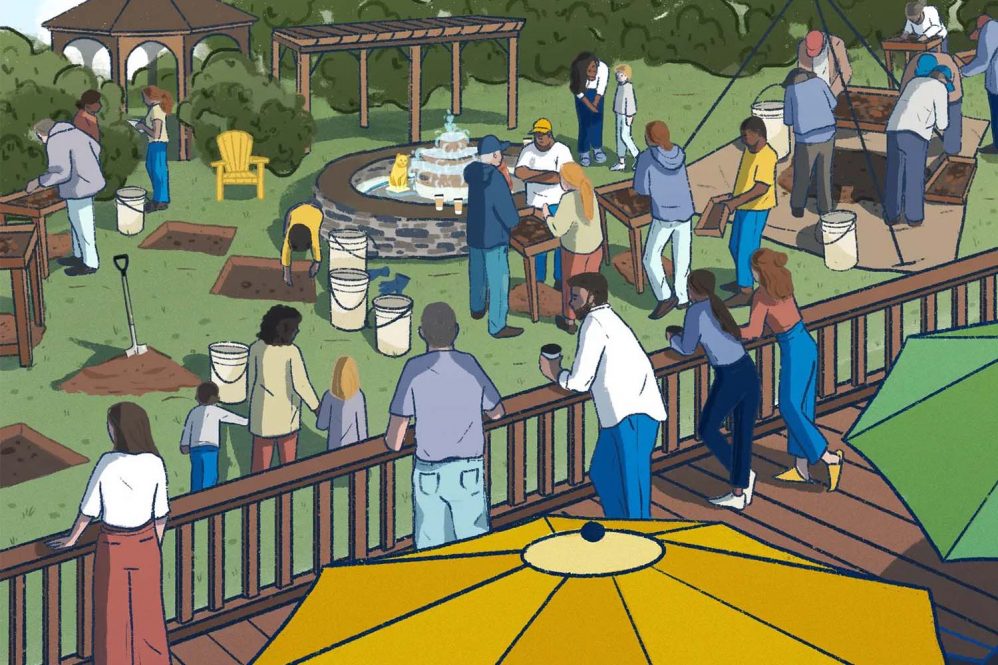One day in May 2020, while settling on the porch of the Two Wrasslin’ Cats coffee shop in East Haddam, Connecticut, archaeologist Mark Clymer glanced down and noticed something left behind by someone who had been at the same spot before him — around 12,000 years ago.
Clymer knew right away the small tool he spied was made of a type of sedimentary rock called Normanskill Chert, which could not have come from anywhere near where he sat but would have originated instead in the Hudson Valley region over 100 miles away.
Clymer, who’s studied the past and had an eye out for artifacts since his childhood in New York State, told the shop’s owner, Mark Thiede ’86 Ph.D., that there was something interesting underfoot in the patio area and asked if he could dig a few exploratory test pits.
Thiede gave the green light, and Clymer started digging a 50-by-50-centimeter (roughly 20-by-20-inch) test pit. “I started finding more material, chips, and possible tools made of this Normanskill Chert. I knew there was something going on here.”
Clymer got in touch with archaeologists Sarah Sportman ’11 Ph.D. and David Leslie ’16 Ph.D. to tell them about the exciting find. “They came out to take a closer look at it, and the rest is history,” Clymer says.
In the two-plus years since then, the team has returned a handful of times, each visit yielding new and exciting finds pointing back to the Pleistocene epoch, which ended roughly 11,700 years ago. What started with pure — if well-informed — luck is now another site that is part of a growing list positioning Connecticut as a center of research about the region’s earliest human inhabitants.



